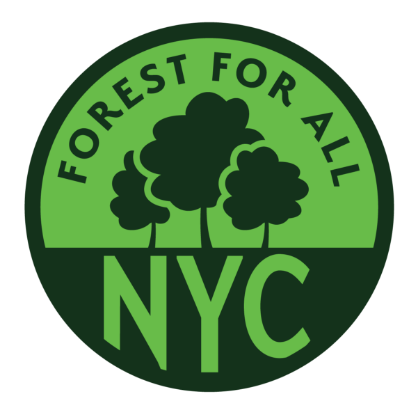By Joseph Ostapiuk | Staten Island Advance
STATEN ISLAND, N.Y. — New York City’s urban forest does more than provide shade and beautify neighborhoods. Trees throughout the five boroughs serve as vital mitigators of the impacts of climate change, absorbing stormwater and lowering temperatures on dangerously hot days.
A pair of bills — the focus of a City Council oversight hearing Tuesday — would aim to bolster that natural resource by requiring the city Parks Department to create a master plan focused on protecting and increasing the urban forest and mandating the city consider the role of trees in long-term sustainability planning.
Those measures, according to a wide range of advocates and members of the City Council who expressed support for the legislation, are necessary steps to combating the dangers posed by extreme weather and improving the health of residents.
“If we are to emerge from this climate crisis and solve it and make sure New York City is on the front lines of doing so, then our tree canopy has an essential role to play,” said Queens Councilman Shekar Krishnan, chair of the City Council’s committee on parks and recreation.
The first bill — intro-1065 — would necessitate the Parks Department, in consultation with other agencies, to create an “Urban Forest Master Plan” focused on preservation and expansion. That plan would then be updated every five years, and the bill would mandate the city collect detailed data monitoring the effectiveness of the effort.
A second bill discussed during the hearing — intro-1066 — would require the mayor’s Office of Long-Term Planning and Sustainability to make trees, canopy and vegetation in its longer-range efforts to prepare the city for its future.
Jennifer Greenfeld, the deputy commissioner for Environment and Planning for the city Parks Department, said the agency appreciates the intent of the two bills and both aims to create a more robust urban forest and recognizes the significant role trees play as infrastructure within New York City.
“The urban canopy is one of the most vital resources the city has in ensuring our neighborhoods are healthy and thriving,” said Greenfeld. “It provides numerous measurable benefits to our five boroughs, including improving human health and well being, and I’m very proud of the work our parkies do every day to grow and protect our city’s trees.”
Just over half of New York City’s trees are managed by the city Parks Department, with about one-third on private land and the remaining percentage falling to the responsibility of other agencies.
Mayor Eric Adams, within his new sustainability blueprint, PlaNYC, committed to a goal which calls for increasing the city’s tree canopy to 30% of its area by 2035. A report released last year found the five boroughs could sustain tree canopy across 40% of its area, and a 2017 analysis found about 22% of the city had tree canopy cover at the time.
That goal is attainable, said Greenfeld, but not a guarantee under its current timeline.
“We think it’s a feasible goal, but it’s a very ambitious timeline,” said Greenfeld at Tuesday’s hearing.
Despite the Adams administration agreeing to working to attain that threshold, some have expressed stark concern over a lack of funding allocated toward the budget of the city Parks Department, an integral funding to maintaining the natural areas the agency handles. Through two budget cycles, Adams has not yet come through on a promise to place aside 1% of the city’s overall budget to that operations budget — a shortcoming that has frustrated some advocates as studies illustrate the widespread benefits offered by green spaces.
Still, Forest for All NYC, a broad coalition of advocates from across the five boroughs, applauded the new legislation as critical steps to bring the city in line with other large municipalities that have already established the need for master plans and bolster planning for climate change-related weather events.
“Our coalition works tirelessly to advocate about the importance of protecting, expanding, and monitoring the urban forest,” said Emily Nobel Maxwell, cities director for The Nature Conservancy in New York, in a statement. “We thank the NYC Council for their leadership mandating we have the right information, metrics, and a plan to ensure we achieve at least 30% tree canopy cover by 2035 equitably.”
More than 40 organizations provided testimony during the City Council hearing, demonstrating widespread support for the legislation.
“With climate change showing its true impact every day, this legislation couldn’t come at a better time,” said Nelson Villarrubia, executive director of Trees New York. “By creating an urban forest master plan and incorporating trees into our city’s long-term planning efforts, we ‘ll be able to track the progress and ensure we meet the goal of a 30% tree canopy by the year 2035.”
Original article here.
